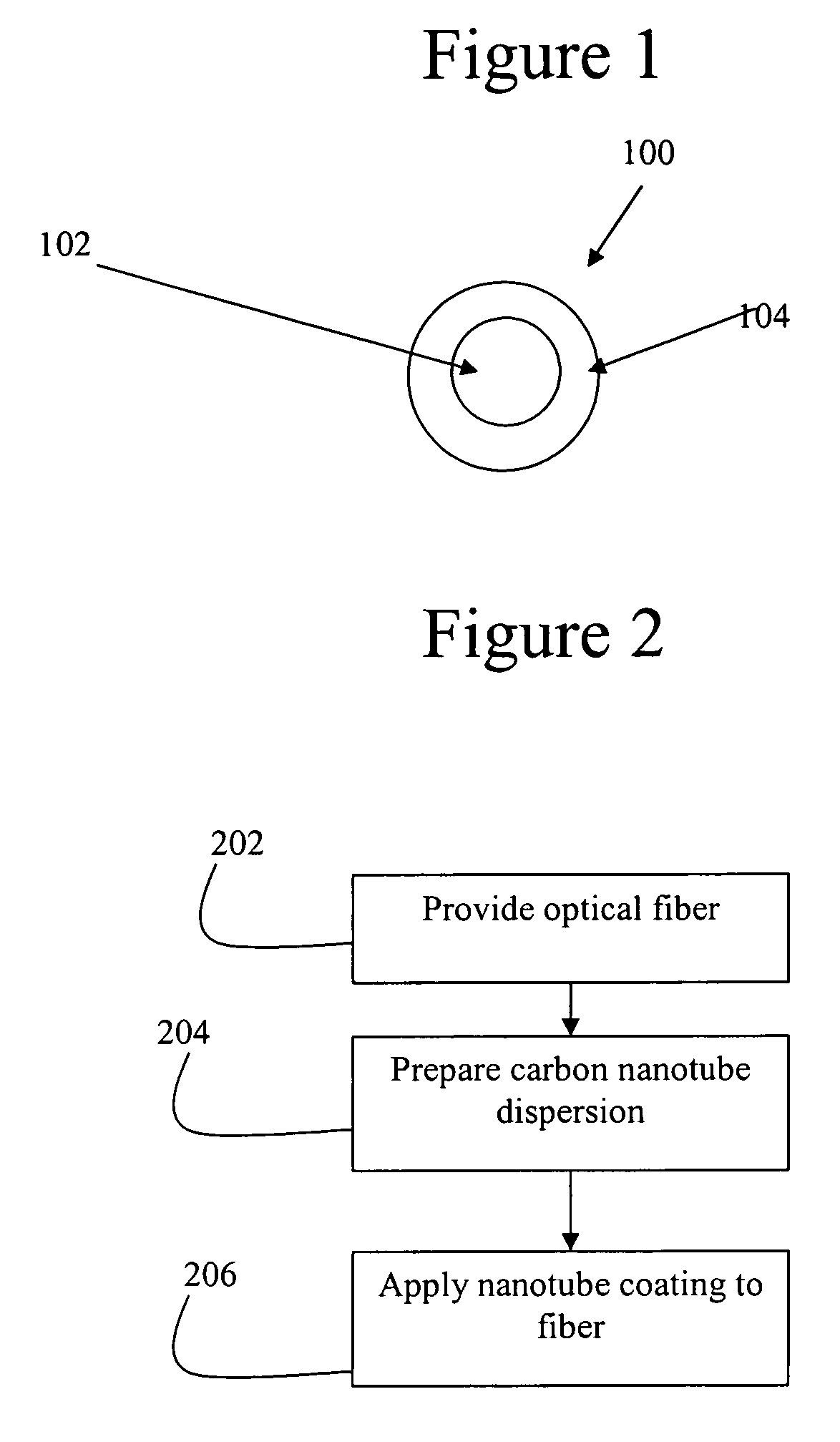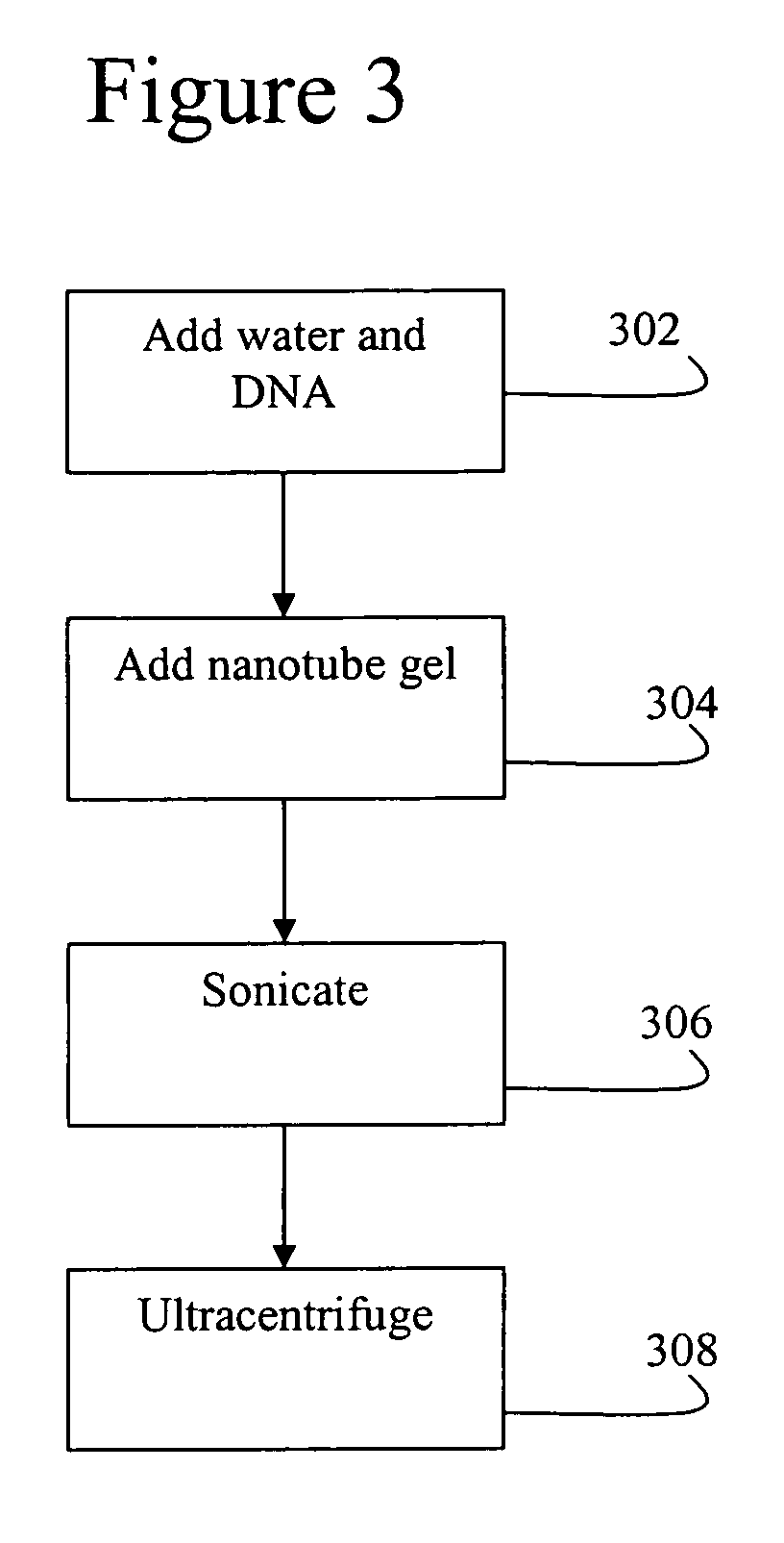High-reliability optical fiber having a nanocomposite coating
a nano-composite coating, high-reliability technology, applied in the field of optical fibers, can solve problems such as preventing effective composite formation, and achieve the effects of enhancing polymer characteristics and capabilities, providing moisture barrier and strength, and reliable operation
- Summary
- Abstract
- Description
- Claims
- Application Information
AI Technical Summary
Benefits of technology
Problems solved by technology
Method used
Image
Examples
Embodiment Construction
[0034]A preferred embodiment of the present invention will be set forth in detail with reference to the drawings, in which like reference numerals refer to like elements or steps throughout.
[0035]FIG. 1 shows a cross section of a coated optical fiber 100 according to the preferred embodiment. The coated optical fiber 100 includes an optical fiber 102 having a carbon nanotube containing film 104 applied thereto.
[0036]FIG. 2 is a flow chart showing a technique for applying the carbon nanotube film 104 of FIG. 1. In step 202, the optical fiber 102 is provided. In step 204, a carbon nanotube dispersion is prepared. In step 206, the dispersion is used to apply a carbon nanotube coating 104 to the fiber 102 to form the coated fiber 100.
[0037]A preferred process for carrying out step 204 of forming the dispersion has been developed as part of the present invention to overcome a known problem with nanotube films. More specifically, in applying a nanotube film, there is the problem that is a...
PUM
| Property | Measurement | Unit |
|---|---|---|
| Length | aaaaa | aaaaa |
| Dispersion potential | aaaaa | aaaaa |
| Hydrophobicity | aaaaa | aaaaa |
Abstract
Description
Claims
Application Information
 Login to View More
Login to View More - R&D
- Intellectual Property
- Life Sciences
- Materials
- Tech Scout
- Unparalleled Data Quality
- Higher Quality Content
- 60% Fewer Hallucinations
Browse by: Latest US Patents, China's latest patents, Technical Efficacy Thesaurus, Application Domain, Technology Topic, Popular Technical Reports.
© 2025 PatSnap. All rights reserved.Legal|Privacy policy|Modern Slavery Act Transparency Statement|Sitemap|About US| Contact US: help@patsnap.com



